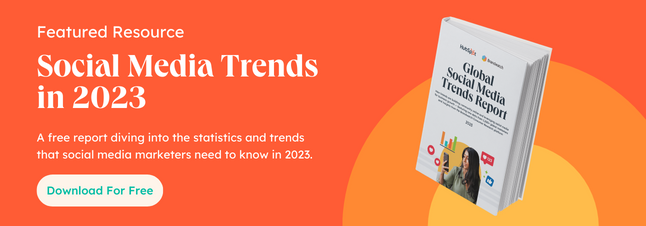Have you ever been hypnotized by social media? According to our recent Consumer Trends survey, users of it spend an average of three hours a day there.
It’s easy to fall into a social media trap, filled with endless distraction. One minute you’re checking a DM and the next thing you know you’ve spent an hour watching videos of corgis playing fetch.
But, it does make you wonder what consumers actually do while spending all that time on social media. And — as a marketer — you’re likely going a step further by asking: “What’s my target audience doing on there?”
Why Consumers Use (& Love) Social Media
Before asking social media users what the heck they’re doing on social media all day, we asked them to choose the top three reasons they log on in the first place.
And considering the average social media user spends three hours a day on their platforms of choice, it’s no surprise that they log on to do a bit of everything there:

In digging deeper, we determined the top three reasons users log on to each major social media platform:

While Facebook and Instagram are mainly used to share content from our lives and keep up with family, users turn to TikTok and YouTube for entertainment, education, and inspiration. We also have Twitter and LinkedIn, the only platforms that are primarily used to keep up with news and trends.
With that in mind, we can dive a little deeper into the top reasons people use each of these platforms.
What Social Media Users Do on Each Platform
Facebook users primarily keep up with loved ones — but also like to share media on their feeds.
Facebook — used by 69% of U.S. adults is the most popular social media app on our list.
Two in three Facebook users are on it to keep up with friends and family, 43% use it to share pictures and videos, and 26% go to Facebook simply for entertainment. About one in five lean on Facebook for news or trends, as well as to learn new things. 
YouTube users seek out entertainment, education, and inspirational content.
YouTube is the second most popular social media platform, used by 57% of U.S. adults. Edutainment thrives on YouTube – the top reasons people visit are to find entertaining content, learn new things, find inspiration, and keep up with news and trends. About one in five YouTubers use the app to keep up with brands and products.

Instagrammers share multimedia content while keeping up with friends, family, and celebrities.
45% of American adults use Instagram, and the top uses are to share pictures/videos (38%), to keep up with friends and family (33%), follow celebrities and influencers (27%), find entertaining content (27%), and keep up with brands/products (24%).

TikTok users watch a mix of entertaining, educational, and inspirational content.
Just about one in three U.S. adults are on TikTok, but this shoots up to 62% when we look at Gen Z.
Overall, TikTok’s used much like YouTube – for entertainment, education, and inspiration. 23% use TikTok to keep up with celebs/influencers and 21% use it to share their own content. About one in five TikTokers go to the platform to follow brands/products, while the same amount use it to keep up with news and trends.

Twitter users crave news, entertainment, and celebrity content.
Twitter stands out as the only platform where keeping up with news and cultural trends is the #1 reason people use the app. Finding entertaining content (27%), keeping up with celebrities (26%), and learning new things (23%) are also top reasons for Twitter usage.

LinkedIn users surf feeds for education, industry news, and brand updates.
As the only social media platform on this list geared towards professionals, it’s no surprise that the top reason people use LinkedIn is to learn new things. About 1 in 4 LinkedIn users also log on to keep up with news or trends, brands and their products, and their network of friends and family.
More Social Media Trends
Looking for more social trends? Check out HubSpot’s Social Media Trends 2023 Report blog pos, or the full PDF version below. In this content, we dig into data from 1,200+ social media marketers as well as key insights comparing marketer data to our bi-annual Consumer Trends Report.
![]()

![Download Now: The 2023 State of Social Media Trends [Free Report]](https://i4lead.com/wp-content/uploads/2023/05/3dc1dfd9-2cb4-4498-8c57-19dbb5671820-1.png)

